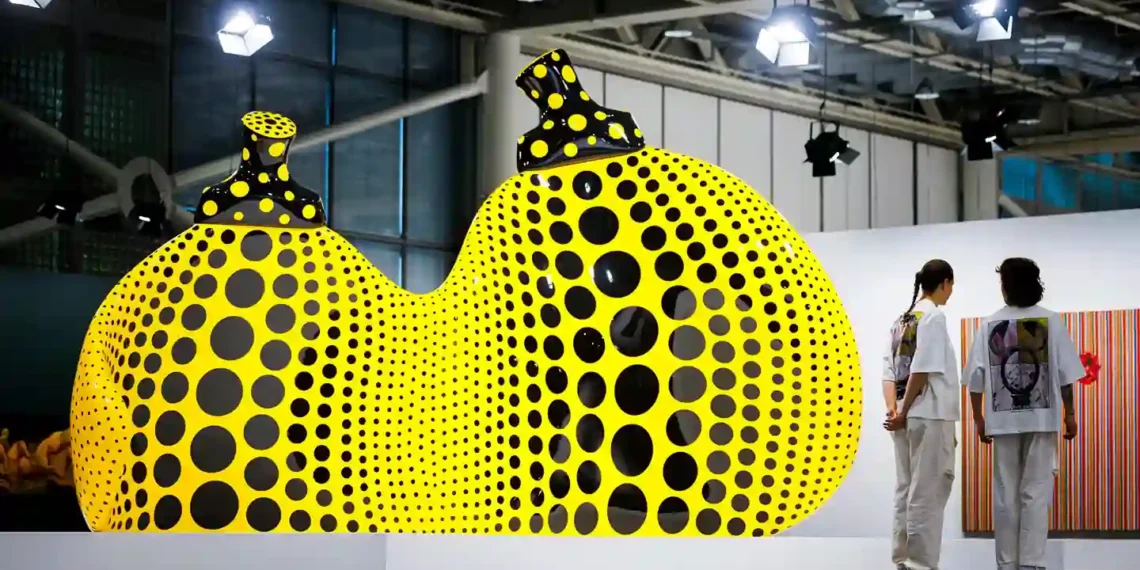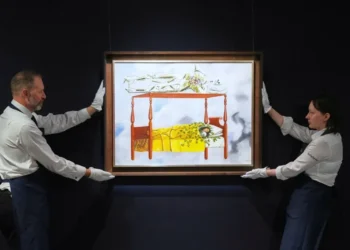Global Art Sales Drop 12% in 2024 Amid Market Uncertainty
Industry report reveals shrinking demand, shifting tastes, and rising pressure on galleries and dealers
The global art market took a significant hit in 2024, with total sales of art and antiques dropping 12% to an estimated $57.5 billion, according to the Art Basel and UBS Art Market Report. This marks the second straight year of decline and the third-largest contraction in the past 15 years—only outpaced by the 2009 financial crisis and the 2020 pandemic downturn.
“It’s been a very challenging year overall,” said Clare McAndrew, founder of Arts Economics and the report’s lead author.
Sales declined in nearly every major region, with China leading the drop at a staggering -33%. The United States, which remains the world’s largest art market, saw a 9% decline, while France and Italy posted 10% drops each. South Korea also recorded a notable 15% decrease.
Interestingly, the UK market weathered the storm better, shrinking by a more moderate 5%, despite ongoing Brexit-related challenges. The UK maintained its spot as the second-largest global art market.
The report notes that, much like in 2023, the top of the market was hit hardest—particularly in contemporary art, which saw auction sales drop 36% to just $1.4 billion, the lowest since 2018.
Buyers appear to be playing it safe, increasingly opting for well-known artists over emerging talent.
“Now everyone wants to buy someone they’ve already heard of,” McAndrew explained. “The appetite for the unknown isn’t there anymore.”
At the same time, there’s been a slight increase in lower-priced sales—artworks under $50,000—pushing up the overall trading volume by 3%, even as the total value fell.
There’s a noticeable shift in who’s benefiting. Smaller galleries and dealers with annual turnovers under $250,000 saw their sales grow 17%, while large-scale dealers bringing in over $10 million experienced a 9% decline.
This suggests a more balanced market is emerging, but one that’s increasingly difficult to profit from, with rising costs across logistics, rent, and operations squeezing margins at every level.
Amid the gloom, there are a few positive notes. Sales of women artists in the primary market grew by 3% year-over-year, showing some progress in an industry long criticized for gender imbalance.
Despite rising global wealth—particularly among billionaires—the art market has failed to regain the peak it hit in 2014. One major issue? Young collectors are pulling back, and the industry remains reliant on older buyers who favor traditional Modern and Post-War art.
“Many of these collectors are in their 60s and 70s… I’m worried about what the art scene will look like 10 years from now,” a dealer told researchers.
There’s also a disconnect between the newly wealthy and the art world, with many potential buyers lacking the knowledge—or perhaps the motivation—to enter the market.
The art world is facing a pivotal moment. With global sales falling, collector habits changing, and the high-end market cooling, dealers and galleries are being pushed to rethink how they operate and who they’re selling to. While smaller players are gaining traction and new voices are emerging, the industry’s future depends on bridging the gap with new generations of buyers and adapting to a market that no longer plays by the old rules.
This article was rewritten by JournosNews.com based on verified reporting from trusted sources. The content has been independently reviewed, fact-checked, and edited for accuracy, neutrality, tone, and global readability in accordance with Google News and AdSense standards.
All opinions, quotes, or statements from contributors, experts, or sourced organizations do not necessarily reflect the views of JournosNews.com. JournosNews.com maintains full editorial independence from any external funders, sponsors, or organizations.
Stay informed with JournosNews.com — your trusted source for verified global reporting and in-depth analysis. Follow us on Google News, BlueSky, and X for real-time updates.














